Here are the pages showing the life cycle of monarchs:
* Monarchs mating and laying eggs
* The monarch caterpillar grows
* The monarch butterfly emerges (this page)
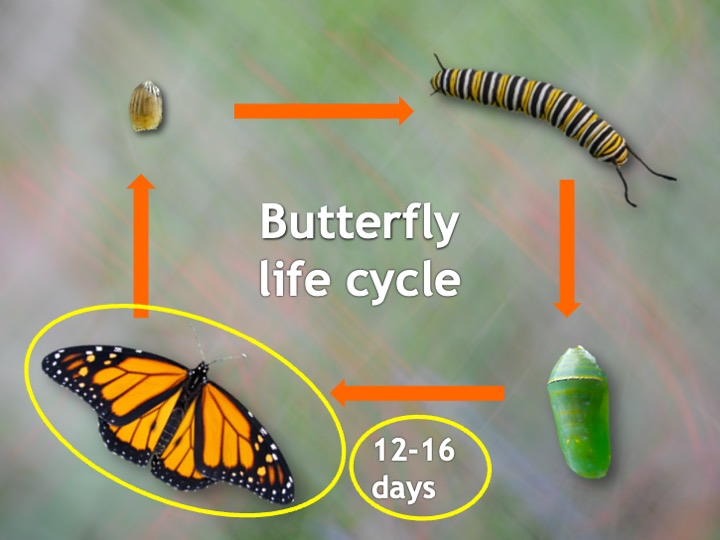
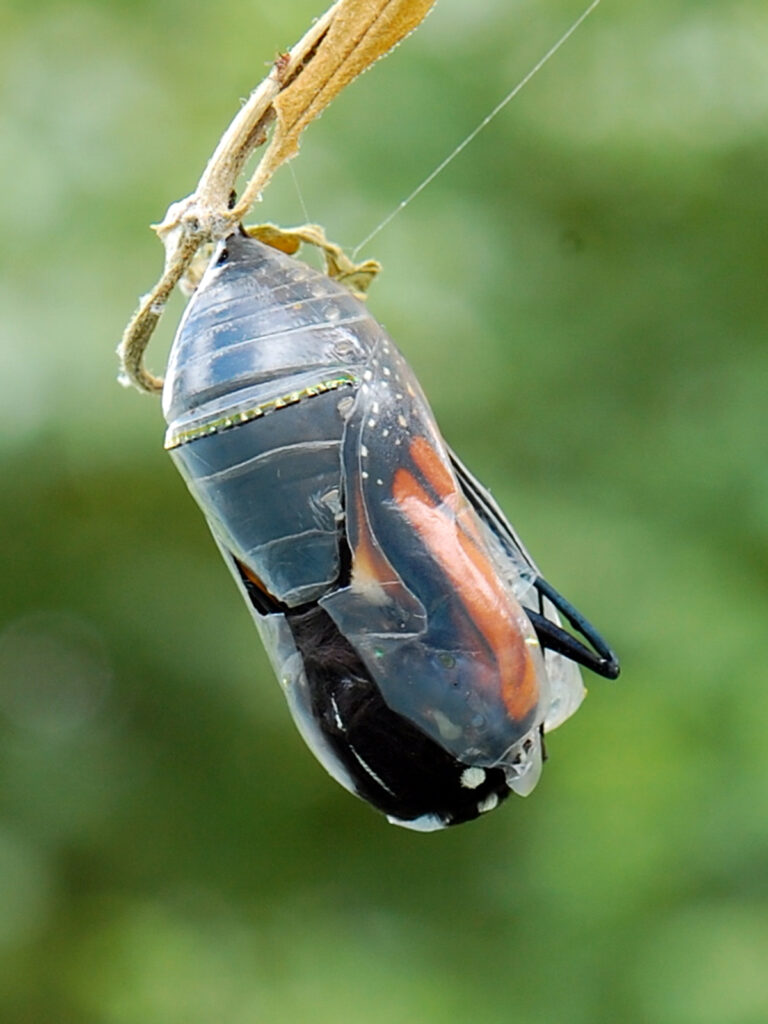
Every time I see this, I think of it as “opening the door” of the chrysalis. (The technical term is “eclosing.”)
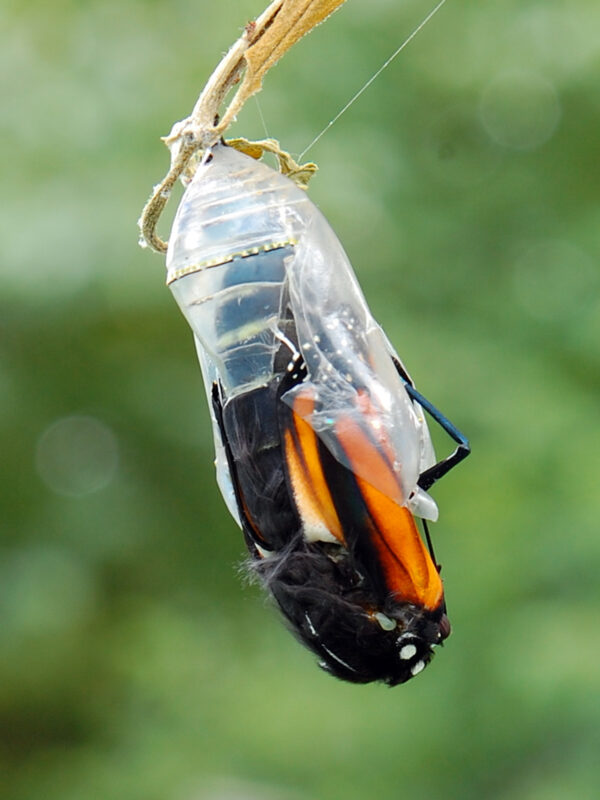
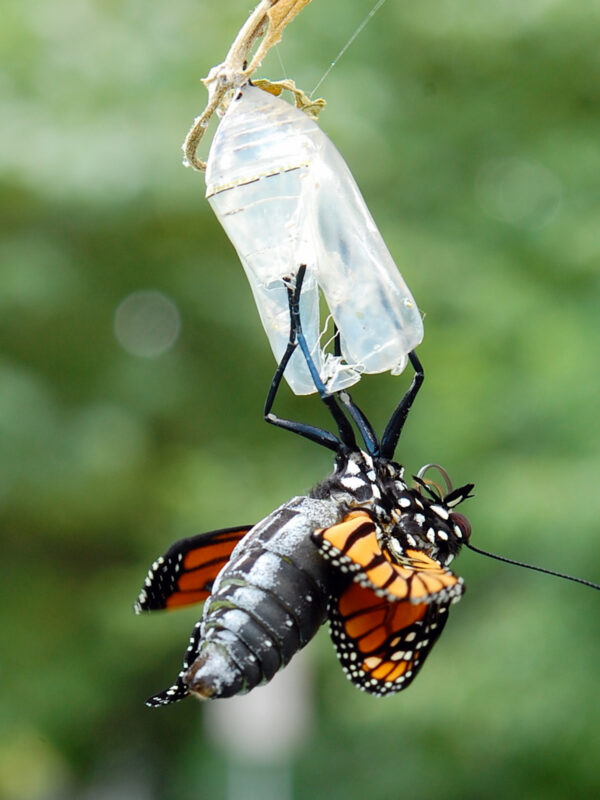
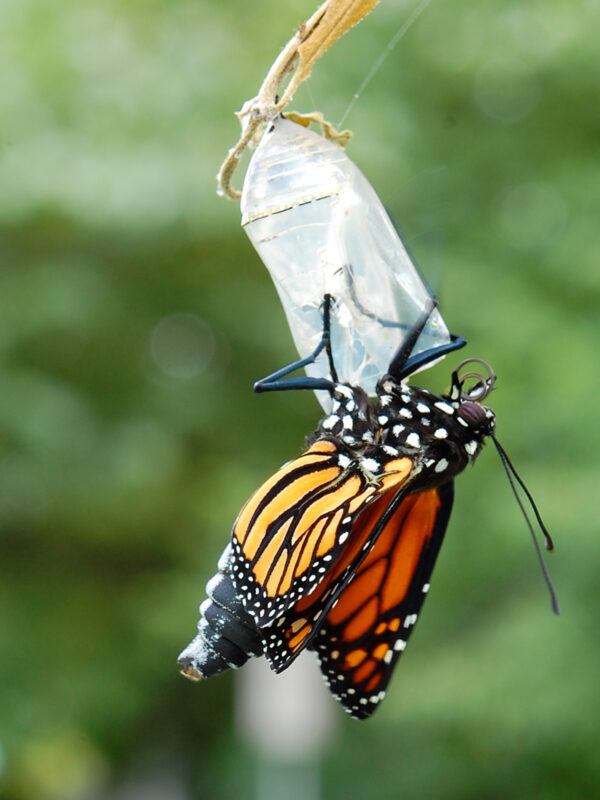
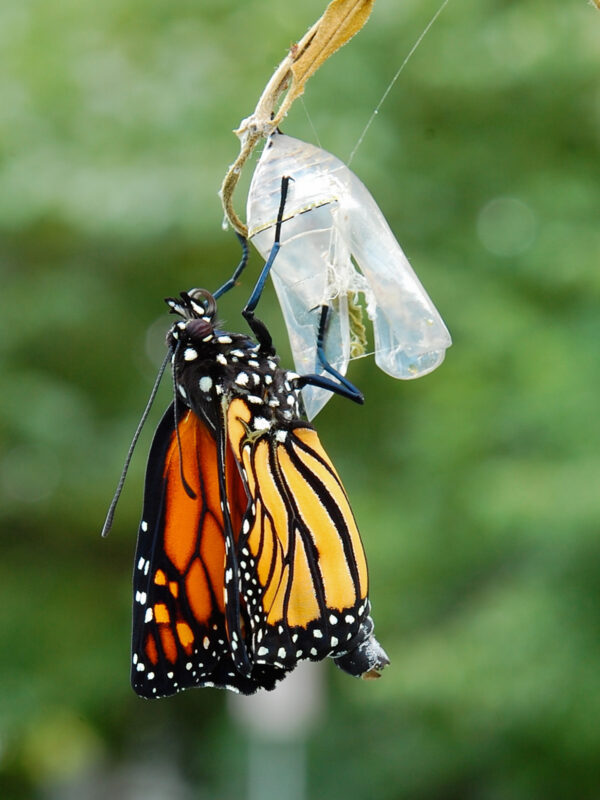
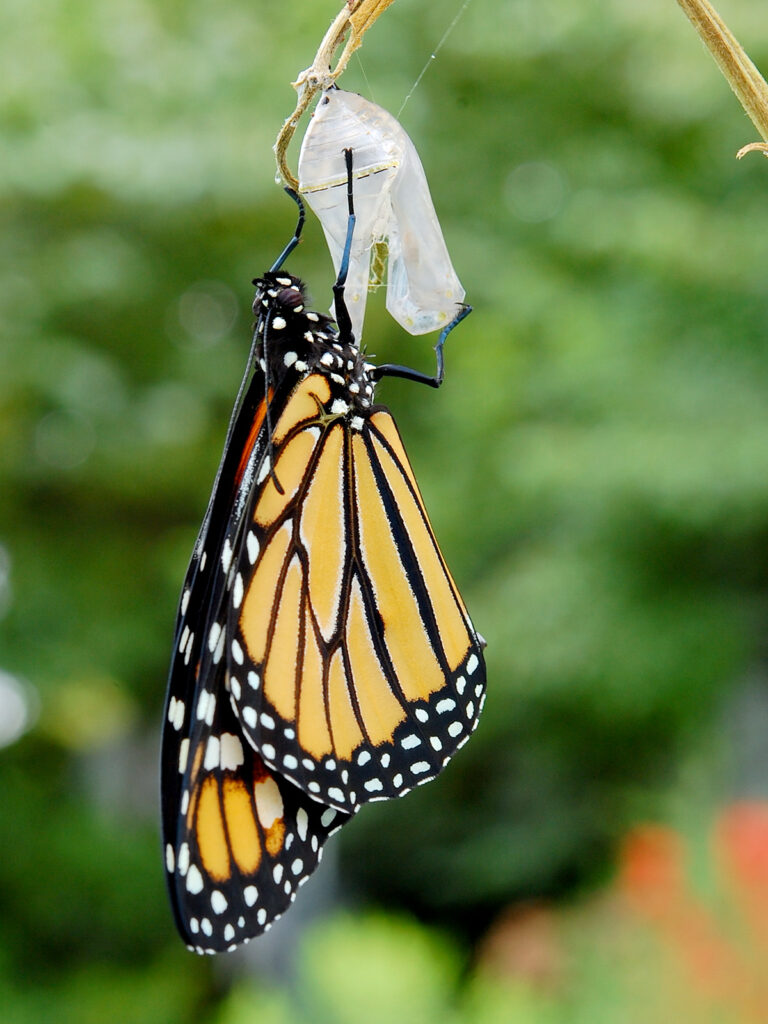
It will hang around a while (hours, even up to the next day) while its wings become really solid before it’s ready to head off. They don’t need nectar during this hardening phase.
Note: I can tell this is a male, since I can see the slight bump of the scent gland in the middle of the wing. It will be more visible when it opens its wings.
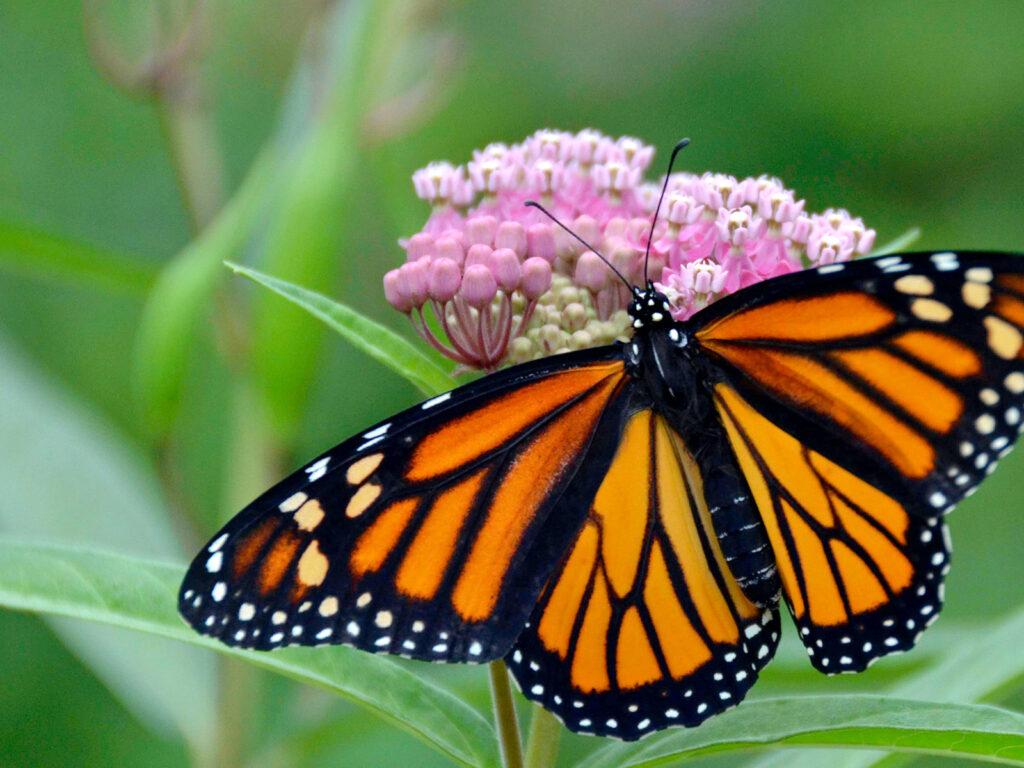
This adult butterfly is the end result of all the stages of caterpillar growth. If it was a member of one of the earlier generations in the summer, it will mate and produce another generation here, living only a month or so. This is a female with darker “veins.”
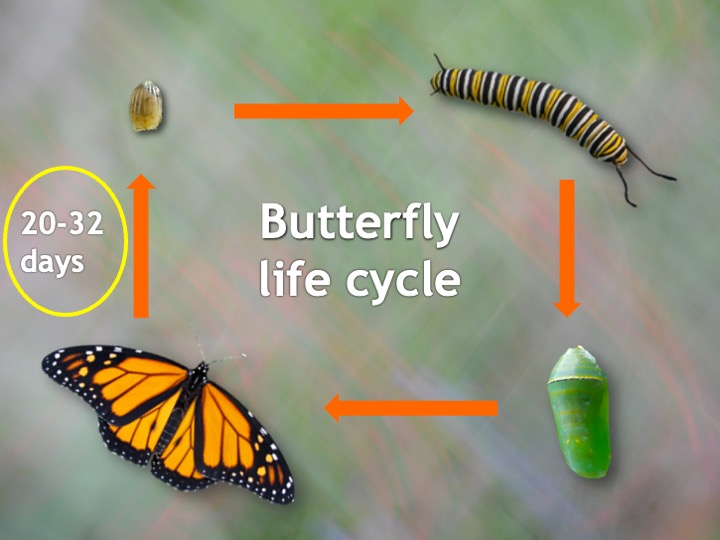
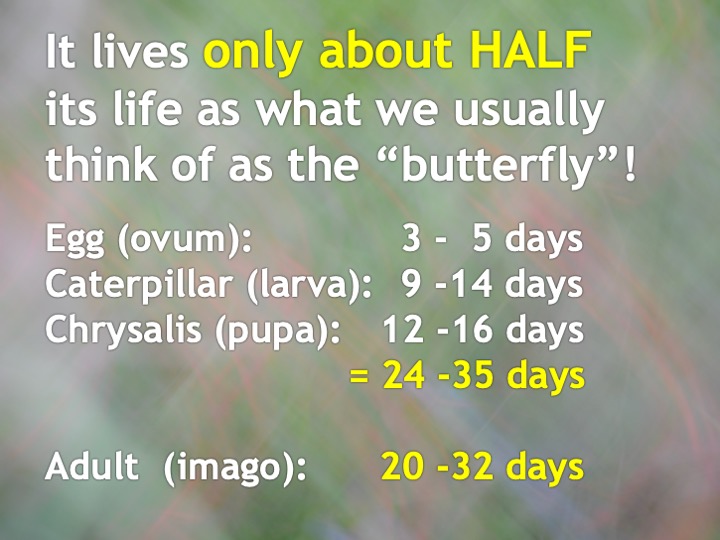
The adult butterfly phase — in other words, what we usually think of as the “butterfly” — is only about half of its life.
BUT IF this monarch is a member of the last generation of the summer here in Central NY, it will be making the long journey to Mexico to overwinter with all the other monarchs east of the Mississippi, to reproduce the first generation in the South next spring.
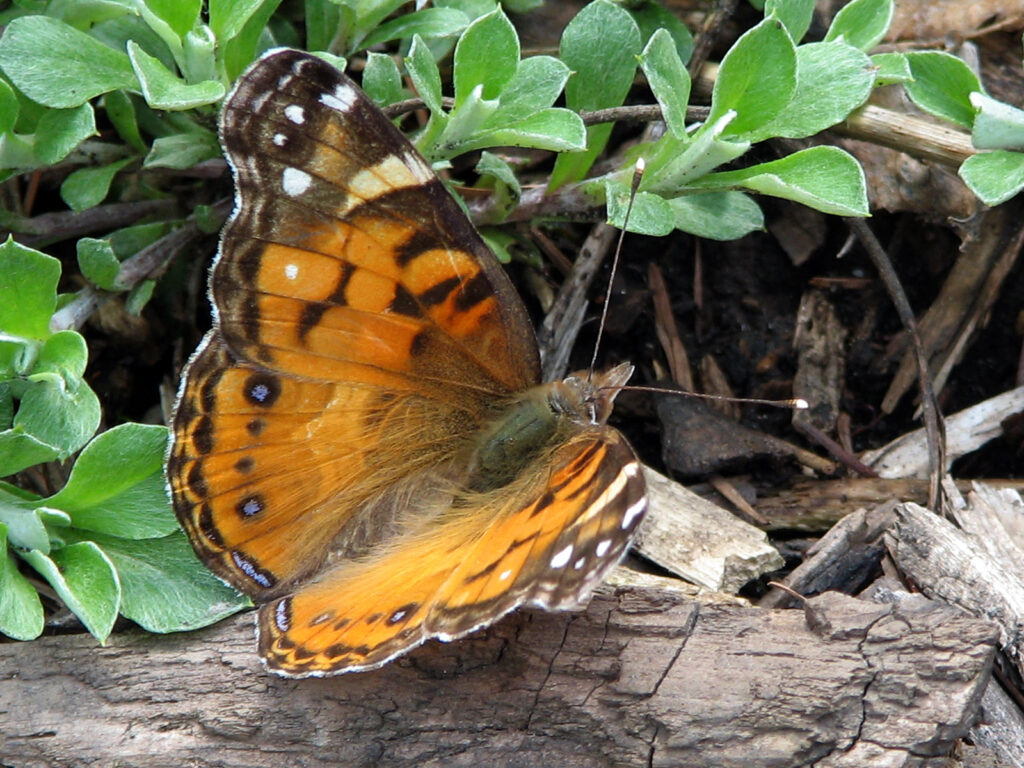
NOTE: Some people mistake smaller orange and black butterflies (such as this American Lady butterfly) as monarchs or as “baby monarchs.”
There are no “baby monarchs”! They emerge as full-sized adult butterflies.
So what exactly IS a “baby monarch”? A monarch caterpillar!
Point Pelee National Park
Point Pelee National Park (in Canada) is a take-off point for crossing Lake Erie.
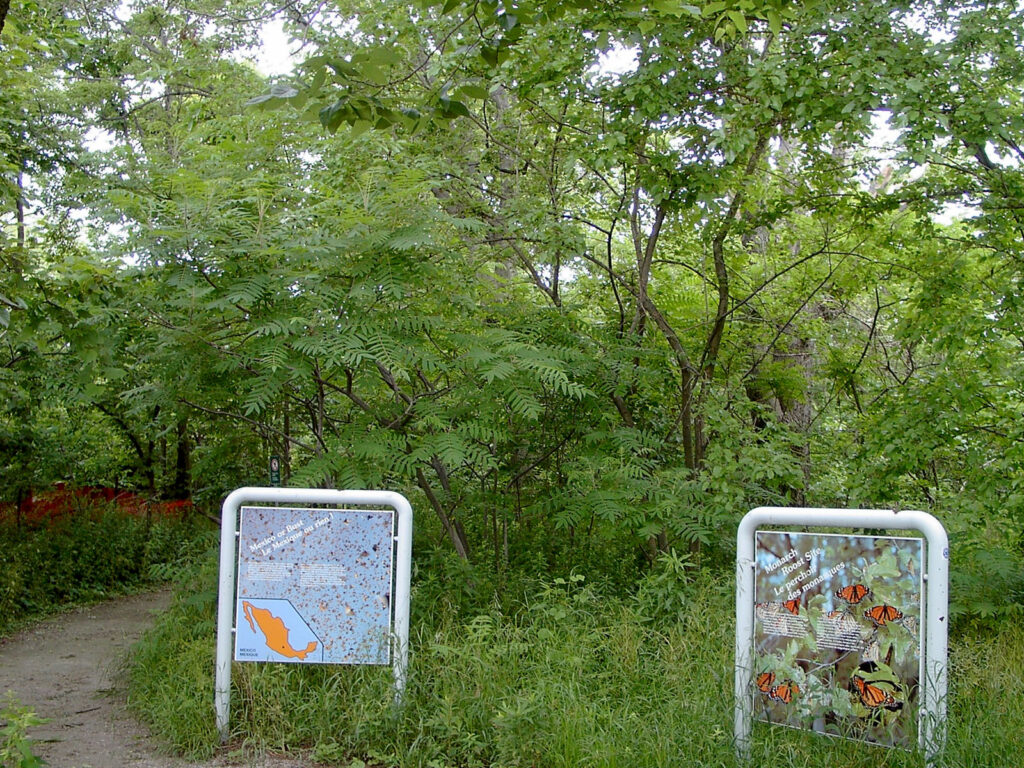
On our way to Detroit one year, we crossed through Canada and stopped at Point Pelee National Park, the southernmost point of mainland Canada (and which is, surprisingly, a little farther south than Syracuse).
The monarch migration is a big deal here!
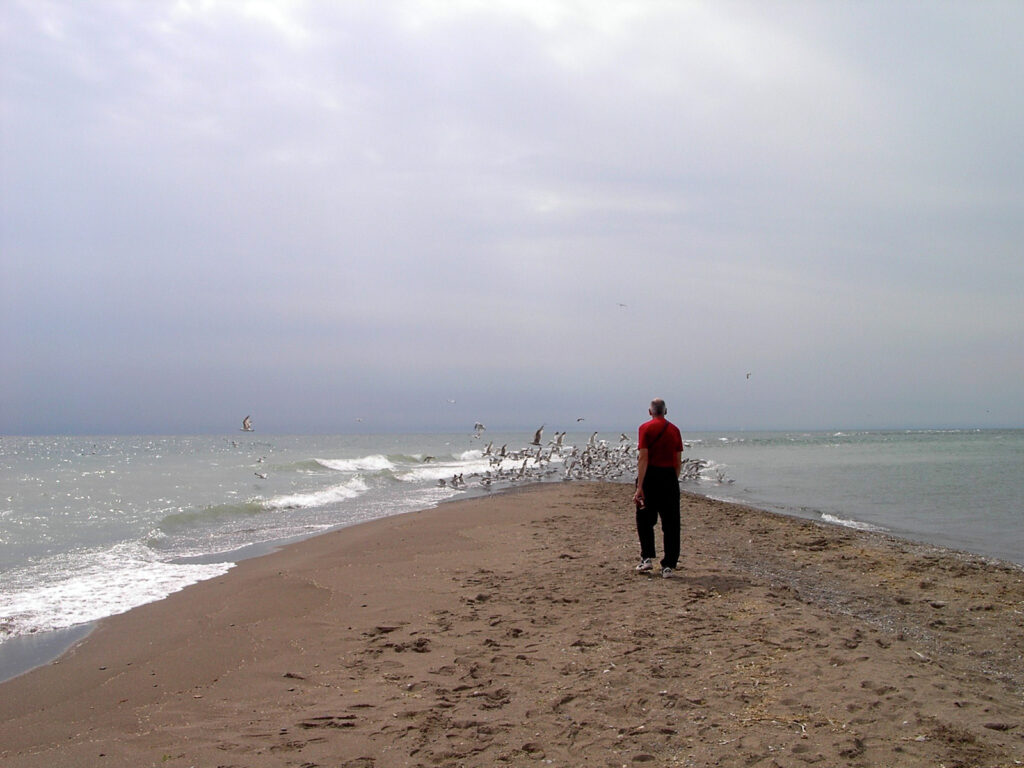
This spit of land — and they don’t call it “point” for nothing — is only about 4 miles long and 2 miles wide. It juts out into Lake Erie and makes it just that much shorter a route to cross this large lake.
How do the monarchs know that?
Monarchs gather at Point Pelee in September. Unfortunately, we were there in summer so we didn’t see them, but it was interesting to see this unusual piece of land, so ordinary looking, but so important to the migration.
The migration in our yard
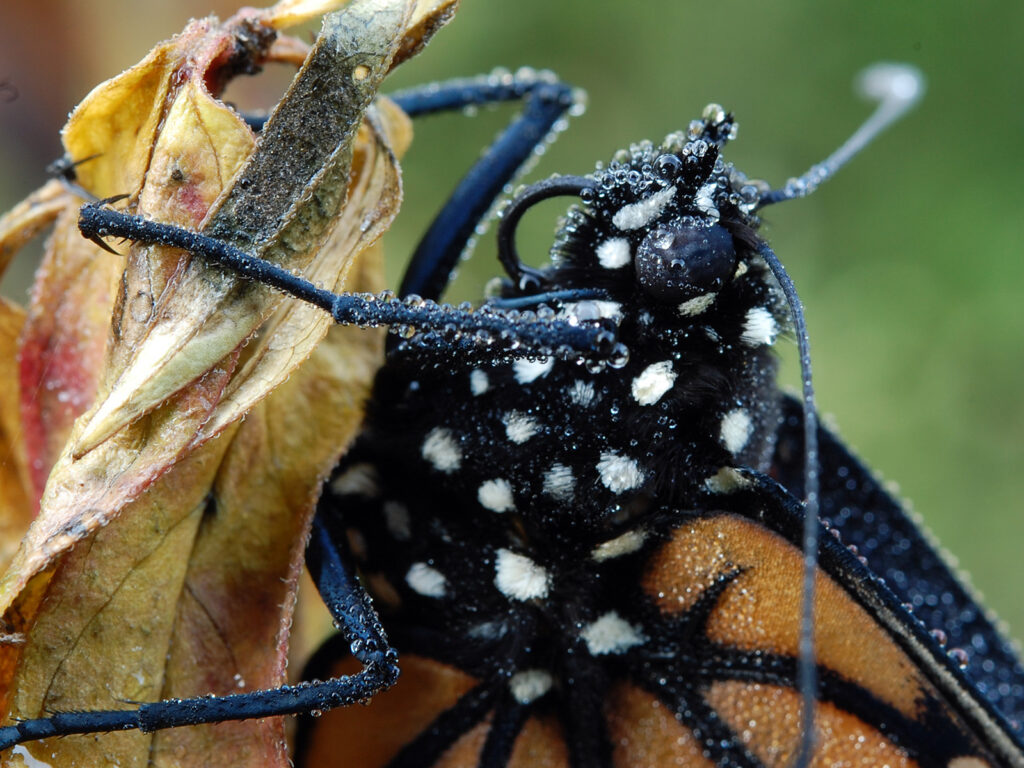
Our own yard is apparently not on a migration path, but people have reported seeing large numbers of monarchs in various places in Central New York.
The tagging records from Monarch Watch show that there have been tag recoveries in Mexico from monarchs tagged in New York State on October 7, 8, and 9. (You can see what happens after they leave CNY in the Amazing Journeys video in the Resources below.)
The dates we have seen our last monarch in our yard:
- 2002: Sept. 10
- 2003: Sept. 4
- 2005: Sept. 7
- 2006: Sept. 29
- 2007: Oct. 3
- 2008: Sept. 25
- 2009: Sept. 23
- 2010: Sept. 19
- 2011: Oct. 10
- 2012: Sept. 20
- 2013: Sept. 23
- 2014: Oct. 9
- 2015: Oct. 6
- 2016: Sept. 26
- 2017: Oct. 14
- 2018: Oct. 10
- 2019: Sept. 11
- 2020: Sept. 23
(NOTE: Dates are based on the last photos of monarchs I’ve found in my image collection, so these dates could be interpreted as being at least that date, but possibly later if they happened to travel through my yard and I didn’t see them or manage to get a photo of them.)
Here’s a summary by month:
- September: 4, 7, 10, 11, 19, 20, 23, 23, 23, 25, 26, 29
- October: 3, 6, 9, 10, 10, 14
Plants for monarch adults
Here are some sure-fire, easy-to-grow nectar plants monarchs love:
- milkweeds (of course)!
- Joe-Pye
- goldenrods (and they are NOT the source of fall allergies!)
- native asters (the species, not cultivars)
- purple coneflower
- Canada burnet
- boneset
- wild ageratum
- native thistle
- liatris
- bottlebrush buckeye
- senna
- hyssop
- NY ironweed
Reflections
The Peace of Wild Things
When despair for the world grows in me
and I wake in the night at the least sound
in fear of what my life and my children’s lives may be,
I go and lie down where the wood drake
rests in his beauty on the water,
and the great heron feeds.
I come into the peace of wild things who do not tax their lives with forethought
of grief.
I come into the presence of still water.
And I feel above me the day-blind stars
waiting with their light.
For a time I rest in the grace of the world, and am free.
~ Wendell Berry, Collected Poems, 1985
